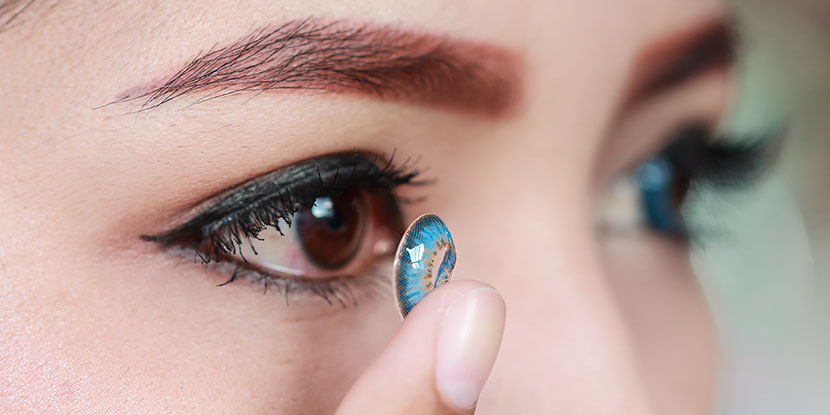
Lens Technology
In today’s world, technology is constantly evolving and improving. This is especially true in the field of optics, where advancements in Lens Technology have revolutionized the way we see and interact with the world around us. From cameras to eyeglasses, lenses play a crucial role in our daily lives and their development has come a long way since the first pair of glasses were invented in the 13th century. In this blog post, we will delve into the latest advancements in lens technology and explore the future of optics.
The Evolution of Lenses
From Simple Glass to Complex Materials
The earliest lenses were made from simple glass, which was shaped and polished to create a convex or concave surface. These lenses were used primarily for magnification purposes and were not very effective in correcting vision problems. However, as technology progressed, new materials such as plastic, silicone, and even liquid crystal were introduced, allowing for more complex and versatile lenses to be developed.
One of the most significant advancements in lens technology was the invention of the aspheric lens. Unlike traditional spherical lenses, which have a uniform curvature, aspheric lenses have varying curvatures across their surface. This allows for better correction of vision problems and reduces distortions in the peripheral vision. Aspheric lenses are now commonly used in eyeglasses, contact lenses, and camera lenses.
Another breakthrough in lens technology was the development of multifocal lenses. These lenses have different zones that correct near and far vision, eliminating the need for multiple pairs of glasses. Multifocal lenses have greatly improved the quality of life for individuals with presbyopia, a condition that affects near vision as we age.
The Rise of Digital Lenses
With the increasing use of digital devices such as smartphones, tablets, and computers, our eyes are exposed to a significant amount of blue light. This high-energy visible light can cause eye strain, fatigue, and even long-term damage to our eyes. To combat this, lens manufacturers have introduced digital lenses that filter out blue light and reduce glare.
Digital lenses also have the added benefit of reducing the strain on our eyes when switching between near and far vision. This is achieved through a process called “free-form” manufacturing, where the lenses are customized to the individual’s prescription and eye movements. This technology has greatly improved the visual comfort for individuals who spend a lot of time in front of screens.
The Impact of Nanotechnology
Nanotechnology has had a significant impact on the development of lenses, particularly in the field of eyeglasses. By incorporating nanoparticles into the lens material, manufacturers are able to create lenses that are more durable, scratch-resistant, and water-repellent. These properties make them ideal for everyday use, especially for those who lead an active lifestyle.
Furthermore, nanotechnology has also allowed for the creation of photochromic lenses, which darken in response to UV light. These lenses provide protection from harmful UV rays while still allowing for clear vision indoors. They are a popular choice for individuals who spend a lot of time outdoors and want the convenience of not having to switch between regular and sunglasses.
Advancements in Lens Coatings
Anti-Reflective Coatings
One of the most common complaints about glasses is the glare caused by reflections on the lenses. This not only affects the wearer’s vision but also makes their glasses less aesthetically appealing. To address this issue, anti-reflective coatings were introduced. These coatings reduce glare by allowing more light to pass through the lenses, resulting in clearer vision and less strain on the eyes.
Anti-reflective coatings are now widely available and are often included as a standard feature in eyeglasses. They are also beneficial for those who drive at night, as they reduce the glare from headlights and streetlights, making it easier to see the road.
Scratch-Resistant Coatings
Lenses are prone to scratches, which not only affect their appearance but also their functionality. Scratches can cause distortions in vision and reduce the effectiveness of lens coatings. To combat this, scratch-resistant coatings were developed. These coatings make lenses more durable and less likely to get scratched, ensuring that they last longer and provide clear vision.
Scratch-resistant coatings are particularly useful for individuals who work in environments where their glasses may come into contact with hard surfaces or debris. They are also a great option for children’s eyeglasses, as kids tend to be more active and prone to accidents.
Hydrophobic Coatings
Hydrophobic coatings have become increasingly popular in recent years, especially for sunglasses. These coatings repel water, making them ideal for use in rainy or humid conditions. They also prevent water droplets from sticking to the lenses, resulting in clearer vision and reduced eye strain.
In addition to water, hydrophobic coatings also repel oil and dirt, making them easier to clean and maintain. This is particularly beneficial for individuals who wear glasses while cooking or working in dusty environments.
The Future of Lens Technology
Smart Lenses
The concept of smart lenses may seem like something out of a sci-fi movie, but it is quickly becoming a reality. Smart lenses are equipped with sensors and microchips that can collect data about the wearer’s health and environment. This information can then be used to adjust the lenses accordingly, providing optimal vision and comfort.
One example of smart lenses is the “auto-focus” contact lens being developed by researchers at the University of California, San Diego. This lens uses electro-active materials to change its shape and adjust the focus based on the wearer’s eye movements. This technology has the potential to revolutionize the way we correct vision problems, making glasses and contact lenses more personalized and efficient.
Augmented Reality Lenses
Augmented reality (AR) is a technology that superimposes digital information onto the real world. AR lenses are being developed to enhance our vision by providing additional information about our surroundings. For example, these lenses could display directions while driving or translate foreign languages in real-time.
One company at the forefront of this technology is Mojo Vision, which is developing AR contact lenses that can display information directly onto the wearer’s retina. These lenses have the potential to change the way we interact with the world, making everyday tasks more efficient and convenient.
Self-Cleaning Lenses
Cleaning and maintaining lenses can be a hassle, especially for those who wear glasses or contacts every day. To address this issue, researchers are working on developing self-cleaning lenses that use nanotechnology to repel dirt and debris. These lenses would require minimal maintenance and provide clear vision without any smudges or scratches.
In addition to being convenient, self-cleaning lenses could also have a positive impact on the environment. With fewer cleaning solutions and wipes being used, there would be less waste and pollution caused by lens care products.
The Impact of Lens Technology on Society
Improved Quality of Life
The advancements in lens technology have greatly improved the quality of life for individuals with vision problems. From multifocal lenses to digital lenses, people now have a wider range of options to choose from when it comes to correcting their vision. This has allowed them to lead more active and fulfilling lives without being limited by their glasses or contacts.
Furthermore, the development of smart and AR lenses has the potential to improve the quality of life for individuals with disabilities. These lenses could assist with tasks such as reading, navigation, and communication, making everyday life more manageable for those with visual impairments.
Advancements in Healthcare
Lens technology has also had a significant impact on the healthcare industry. With the development of smart lenses, doctors can now monitor their patients’ health remotely and make more accurate diagnoses. This is particularly beneficial for individuals with chronic conditions or those who live in remote areas with limited access to medical care.
Moreover, the use of AR lenses in surgery has improved the precision and accuracy of procedures, resulting in better outcomes for patients. These lenses provide surgeons with real-time information and guidance, reducing the risk of errors and complications.
Economic Growth
The advancements in lens technology have also contributed to economic growth. The eyewear industry is a multi-billion dollar market, and the constant development of new and innovative products has created jobs and opportunities for businesses. Moreover, the increased demand for lenses has led to more research and development, which has resulted in even more advancements in the field.
Conclusion
In conclusion, the advancements in lens technology have come a long way since the first pair of glasses were invented. From simple glass lenses to complex materials, we have seen significant improvements in the quality, durability, and functionality of lenses. With the rise of digital and nanotechnology, lenses are now able to provide better vision correction and protection from harmful elements.
Looking towards the future, the possibilities for lens technology seem endless. With the development of smart and AR lenses, we can expect to see even more personalized and efficient ways of correcting our vision. These advancements not only benefit individuals but also have a positive impact on society as a whole. As technology continues to evolve, we can only imagine what the future holds for lens technology and the world of optics.










